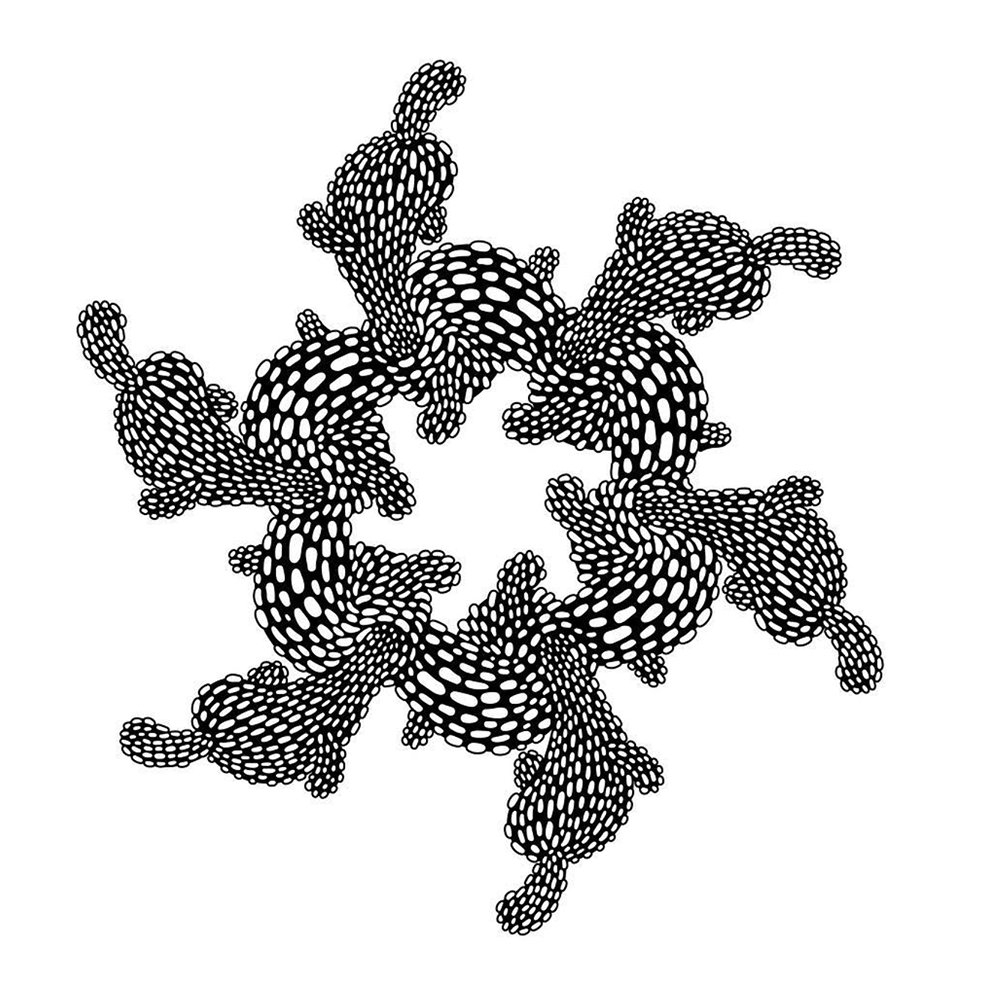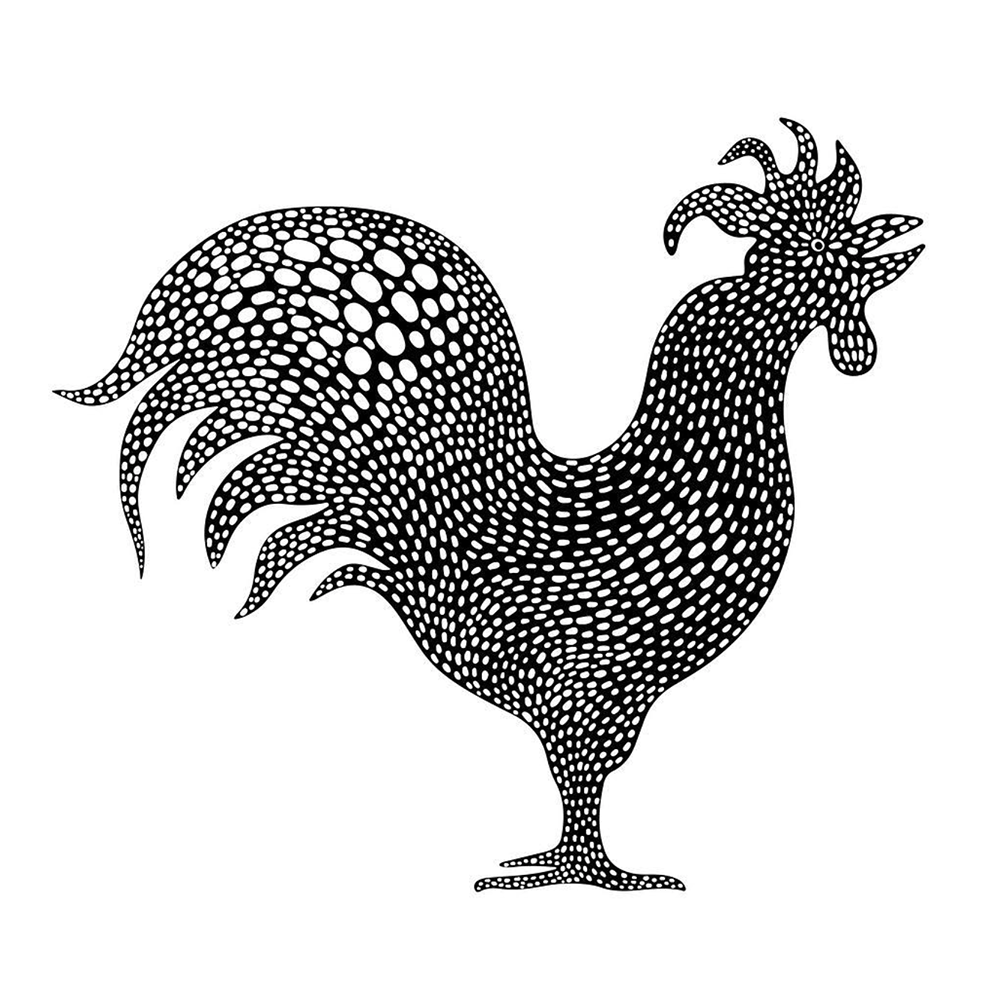You are going to love learning about the vibrant life of designer Dimitry Saïd Chamy, who self describes as “an artist and designer of transdisciplinary practice queering the world one connection at a time with a mixed Arab-Caribbean immigrant flavor from Miami.” Dimitry is a member of the Textile Design Lab and will be our Guest Expert for March as we turn our attention to creating portfolio lookbooks. Dimitry will be kicking off this event with a live presentation on using Canva, you can do so much with this powerful application, like make portfolios, mood boards, and social media. You should take a few minutes to see how Dimitry created this video lookbook in Canva that can also be exported to a slidedeck, so cool!

Miami seems like the perfect place in the United States for someone with Haitian and Lebanese roots, how do these cultures impact what you make and how do you define your personal artistic style?
Miami is definitely the perfect American hometown for me. I was born and grew up in Port-au-Prince, Haiti into a family where creativity was definitely encouraged. Miami is where I started studying film, art, and design after dropping out of the University of Texas, Austin where I tried to study computer science, by programming in Pascal and Fortran using paper punch cards fed into NORAD’s backup mainframes. Somewhere on that campus someone must have been designing on the first Macintosh, but I never met them.
In Miami, with encouragement from my partner, I eventually saw that art and design could be a path forward, leading to my Education at Yale. It would still be many years before I would start the digital drawing practice that eventually comes to define a visual style I think I claim now as mine and to recognize how my cultural background folds in. The first thing that emerged was a love of vibrant color, which definitely surrounded me as a child in Haiti. This vibrancy was in everything from the fruits and foods we ate, to the Tap Taps in streets, to the life of the sea, which is a recurring theme in my work.
The drawing practice builds from graphic marks I connect to elemental archetypes: salt, water, rice and beans. The patterns and ornaments I draw are often based on the mathematical wallpaper groups associated with much Islamic art and architecture, which was my first love as a designer because my father, who was Lebanese, was an engineer and a builder–I grew up on construction sites. An uncle was a fabric merchant, and my grandmother loved to sew. I remember wandering the stock rooms surrounded by bolts of fabric and my grandmother showing me remnant scraps from her fabric trunk, as if they were treasures, though they were too small for her to make anything useful with her foot-pedaled Singer. Each one carried a story in its patterns. All of this developed very organically for me as a personal meditative drawing practice. I intentionally disconnected this practice from my professional design work where I had been taught not to focus on personal style, but on client needs.






You teach at the Ratcliffe Art + Design Incubator at Florida International University, what kind of classes do you teach and what is the advice you find you give students the most about working in design?
RA+DI is a rarity in academia because it’s cross-disciplinary, non-grading, mentoring intensive, practice-focused, and collaborative. All of these attributes connect me to the human dimension of creative work: mindset, psychology, storytelling, building community, etc. So, I in addition to teaching design, branding strategy, business systems, web design, communication, presentation, writing, and business modeling, I always stress to my students to explore the world outside of their core disciplines—especially through collaboration—and to maintain a generalist’s curiosity. In a world where Generative AI is reshaping all creative practices, our curiosity and human connection are the only way we can maintain the agency to move forward with hope in these volatile and uncertain times. I really love having the opportunity to shape and environment that fosters such connections.
What led you to the world of surface pattern design?
I asked my mom to send me a picture of the first mandala I ever painted on a river stone. It’s dated from ‘81! The first time I was asked to design a pattern professionally was around 2007 when I was working in fashion in New York. We were developing a line of handbags for launch on QVC and they needed lining fabrics, quilted stitching patterns, and other decorative motifs as appliqués for all the bags in the collection. The work was both technical and creative—all done in Adobe Illustrator. I felt as if I had fallen into a playpen. When the samples came back from the factory, it blew my mind! I was hooked. I used the same techniques to design the branded set decor for the QVC show that looked like it was quilted. It was so exciting to see it on the air. Sadly, just a month after our launch, the 2008 crash hit and QVC cancelled our line along with countless of others—all that work gone. I still have some of the branded hardware I designed for the line including a zipper pull that I wear as a pendant sometimes. Years later, I came back to surface design through drawing on my iPad, which developed into the work I do now.


Tell us about your participation in Fashion Week at Lincoln Center and the Lowe Museum in Miami. What did you do at these events? What did you learn most from them?
The Mercedes-Benz fashion week show was really interesting for me because I was presenting a my own patented design system based on modular recycled plastic panels that could be easily formed by anyone into quilt-like spatial dividers and wall art as well as smaller lanterns or lamps. It was very pattern oriented but in tactile 3D. It taught me the beauty and power of permutation, when I realized just four single-color panels in just one of the nine shapes could be arranged into 256 2-by-2 arrays. That kind of infinite potential expressed from a simple system gives me cosmic pleasure. Systems just make me happy!
For BANNED! Lucy St. interactive show at the Lowe Art Museum, I got to merge my typography skills with my patterns by creating huge banners inspired by fabric bolts that could be cut up into protective book jackets designed to hide and protect banned books while encouraging viewers to peek inside. There was a brutal dictatorship in Haiti when I was growing up. My parents let me read anything, but I had no access to books that addressed my queerness — they did not exist in my country nor did the internet for me to find community. When I discovered LGBTQ+ bookstores in the USA it was literally a lifesaver—allowing me to let go of shame, fear and isolation. Yet now, the very country that gave me that freedom, seems to be sliding backwards. The book bans in Florida alone affect 2 million children. I want to do what I can to highlight the problem for all those that come after me.

What are your goals for your future work with design? Any interesting projects in the pipeline?
I am really pleased with the response my Art Postcards have been receiving, find them in my shop right here. I want to make more of them and get them into museums and other art related venues and then expand into wall coverings and fabric. Next month, I am participating in a Tarot themed group show in which I am representing the Knight card. I want to expand my drawings into jewelry, Augmented Reality/animation, as well as drawing the cards for the deck. For a solo, show later this year I am working on a multi-channel live video projection interactive installation. I am doing a museum project with kids and hand-animated type. I am learning to think bigger and make work that demands more space and time.

You will be presenting on using Canva to the Textile Design Lab, what other software and applications do you use the most and recommend?
The way Imelda Marcos had shoes, I collect software. It’s really a problem! My stalwart tool is Adobe Illustrator, because all my patterns are vectors, preceded by iOrnament, which I use to draw patterns on my iPad. I also use an app called Sketchclub, but the first app I drew with was Paper by Fifty-Three, which had a pencil stylus long before the pressure sensitive Apple Pencil launched. It didn’t do patterns but the faster you drew the thicker and smoother the line was and this really influenced the style I was developing, where there are almost no sharp corners and everything is quite fluid.
I love WordPress for complex sites, Carrd for simple ones. I use Final Cut for basic editing and After Effects for complex animations. My favorite productivity tools include Airtable, Renamer, TinyPNG, ChatGPT, and of course, Canva—which I also love for animation as we will see in the workshop.

You can follow along with Dimitry’s creative adventures in South Florida through their Instagram.












